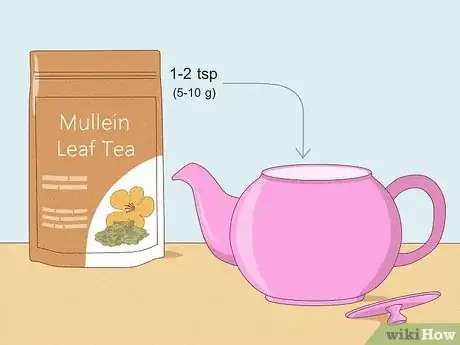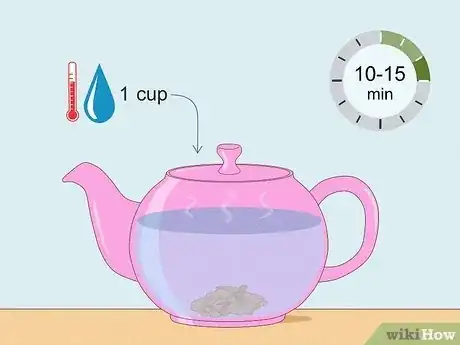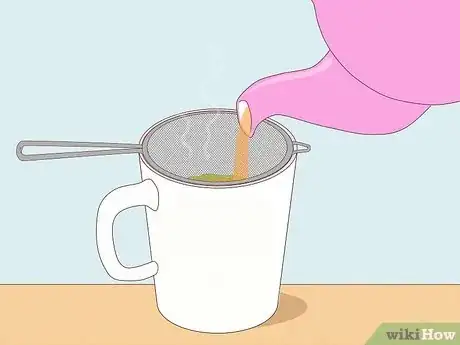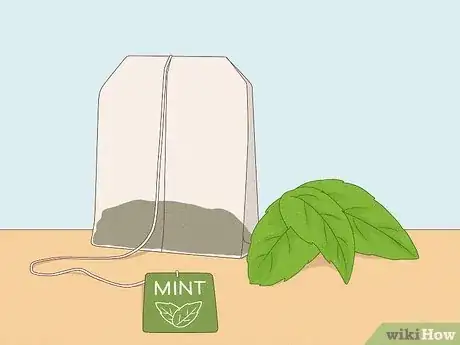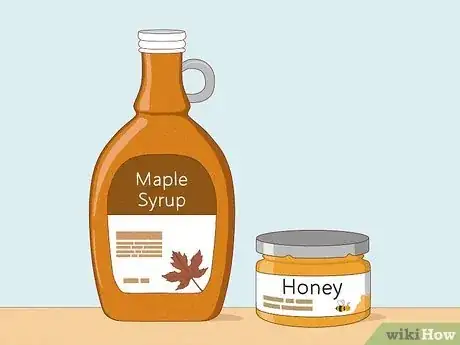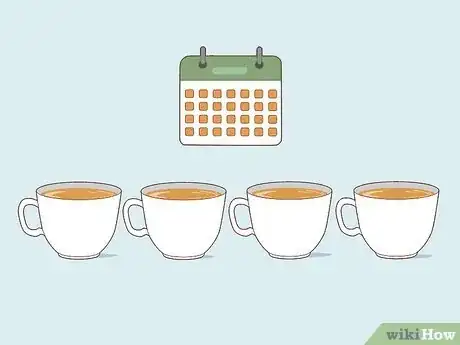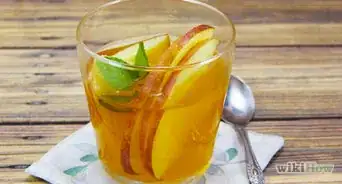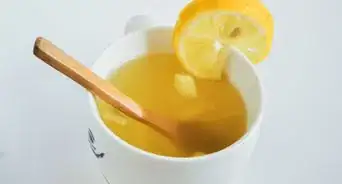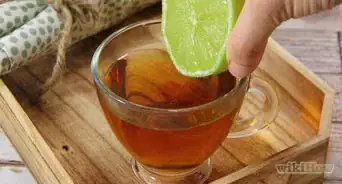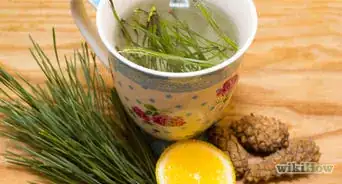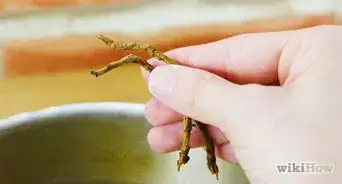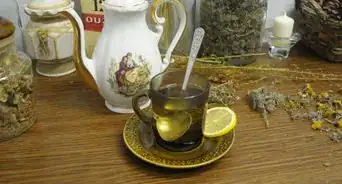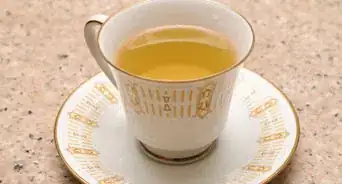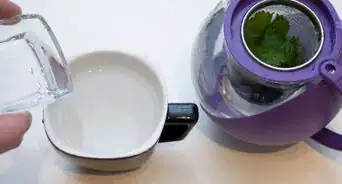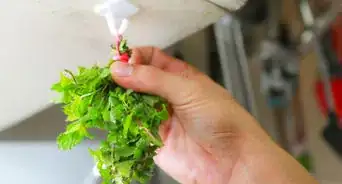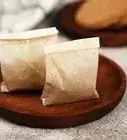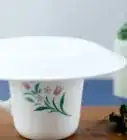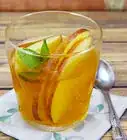This article was co-authored by wikiHow staff writer, Jessica Gibson. Jessica Gibson is a Writer and Editor who's been with wikiHow since 2014. After completing a year of art studies at the Emily Carr University in Vancouver, she graduated from Columbia College with a BA in History. Jessica also completed an MA in History from The University of Oregon in 2013.
There are 12 references cited in this article, which can be found at the bottom of the page.
This article has been viewed 4,815 times.
Learn more...
Mullein is an herbalist's go-to plant for respiratory conditions and it's no wonder why! In traditional medicine, mullein flowers and leaves are used for coughs, colds, bronchitis, and the flu. If you'd like to try your hand at brewing mullein tea, we've got you covered! In this article, we'll walk you through the process of steeping and flavoring mullein so you get the perfect cup.
Things You Should Know
- Use a ratio of 1 to 2 teaspoons (5 to 10 g) of dried mullein for every 1 cup (240 ml) of water.
- Steep the mullein tea for 10 to 15 minutes. Strain the tea through a filter to remove leafy solids.
- Drink up to 4 cups (950 ml) of mullein tea a day to soothe a sore throat or relieve a cough.
Steps
Simple Mullein Tea Recipe
-
1Place 1 to 2 teaspoons (5 to 10 g) of dried mullein in a pot. Use 1 teaspoon (5 g) for weaker tea that has a milder taste. If you'd like stronger mullein tea, put 2 teaspoons (10 g) in a small pot or a heat-safe container that's easy to pour from.[1]
- Use the leaves, the yellow flowers, or a combination if you're harvesting your own mullein. Brewing with just the flowers makes sweeter tea.
- It is possible to use fresh mullein leaves, but you'll need to steep the tea for 20 to 30 minutes and it won't be as strong.
- If you'd like to make a larger batch, feel free to double or triple the amount of mullein leaves. Just remember to add more water, too!
-
2Add boiling water and steep the tea for 10 to 15 minutes. Pour 1 cup (240 ml) of water over the dried mullein. Then, cover the pot and let the tea steep—the longer it steeps, the stronger it will be. The tea also cools a little as it steeps so it will be perfect for sipping![2]Advertisement
-
3Strain the tea through a coffee filter. Line a fine-mesh strainer with a coffee filter or cheesecloth. Set the strainer over a serving mug and slowly pour the mullein tea through the filter. The filter catches prickly hairs from the leaves.[3]
- It's fine to serve the tea unfiltered, but many people find that the tiny hairs scratch their throats.
Community Q&A
-
QuestionCan tea be made out of the root?
 HisGirlFridayCommunity AnswerMost herbalists scrub the root, dehydrate it, chop it, and use it to make a mullein tincture instead of tea.
HisGirlFridayCommunity AnswerMost herbalists scrub the root, dehydrate it, chop it, and use it to make a mullein tincture instead of tea.
Things You’ll Need
- Small pot
- Mug
- Mullein tea
- Fine-mesh strainer
- Coffee filters or Cheesecloth
References
- ↑ https://www.wnyurology.com/content.aspx?chunkiid=21821
- ↑ https://wa.kaiserpermanente.org/kbase/topic.jhtml?docId=hn-2133009#hn-2133009-how-it-works
- ↑ https://youtu.be/O3Zfe_eptts?t=723
- ↑ http://vtherbcenter.org/wp-content/uploads/2015/03/The-Fine-Art-of-Herbal-Tea.pdf
- ↑ https://www.ncbi.nlm.nih.gov/pmc/articles/PMC2967840/
- ↑ https://www.sciencedirect.com/science/article/abs/pii/S0308814614001964
- ↑ https://www.ncbi.nlm.nih.gov/pmc/articles/PMC2995283/
- ↑ https://foodandhealth.com/blog/wp-content/uploads/2015/10/SweetenDrinks.pdf
- ↑ https://wa.kaiserpermanente.org/kbase/topic.jhtml?docId=hn-2133009#hn-2133009-how-it-works
